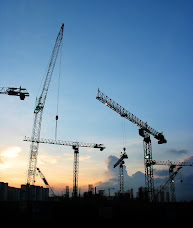One area which I have numerous close friends associated with is manpower security. It is pure speculation/rumour, however it is widely believed that government issues contracts for security services to tenderers who bid at 20-21$ per hour for static security services. The work is then apparently sub-contracted out to companies for even less - probably in the order of 16-$17 per hour.
Given the current award rate for security officers is $15.82 it is very difficult to see how these subcontractors are surviving. Unless of course they also are subcontracting the work out to individuals who are operating as companies.
The questions are: Is the government aware exactly who are providing these services on their projects - and what unknown security risks are running around within the security service providers? Given the tiny margins involved - are security providers fully insured - including those subcontractors they bring to the job? Given the degree of subcontracting, can any government department be certain the security staff they are being given are certified to the appropriate level to do the job?
How much risk do these issues present? If an unqualified, unlicenced security officer who is a sole trader paying no tax under a false ABN accidentally injures someone with a weapon they are not qualified to use, I suspect we will find out relatively quickly. Of course its all speculation......................
Cheers
Steve
